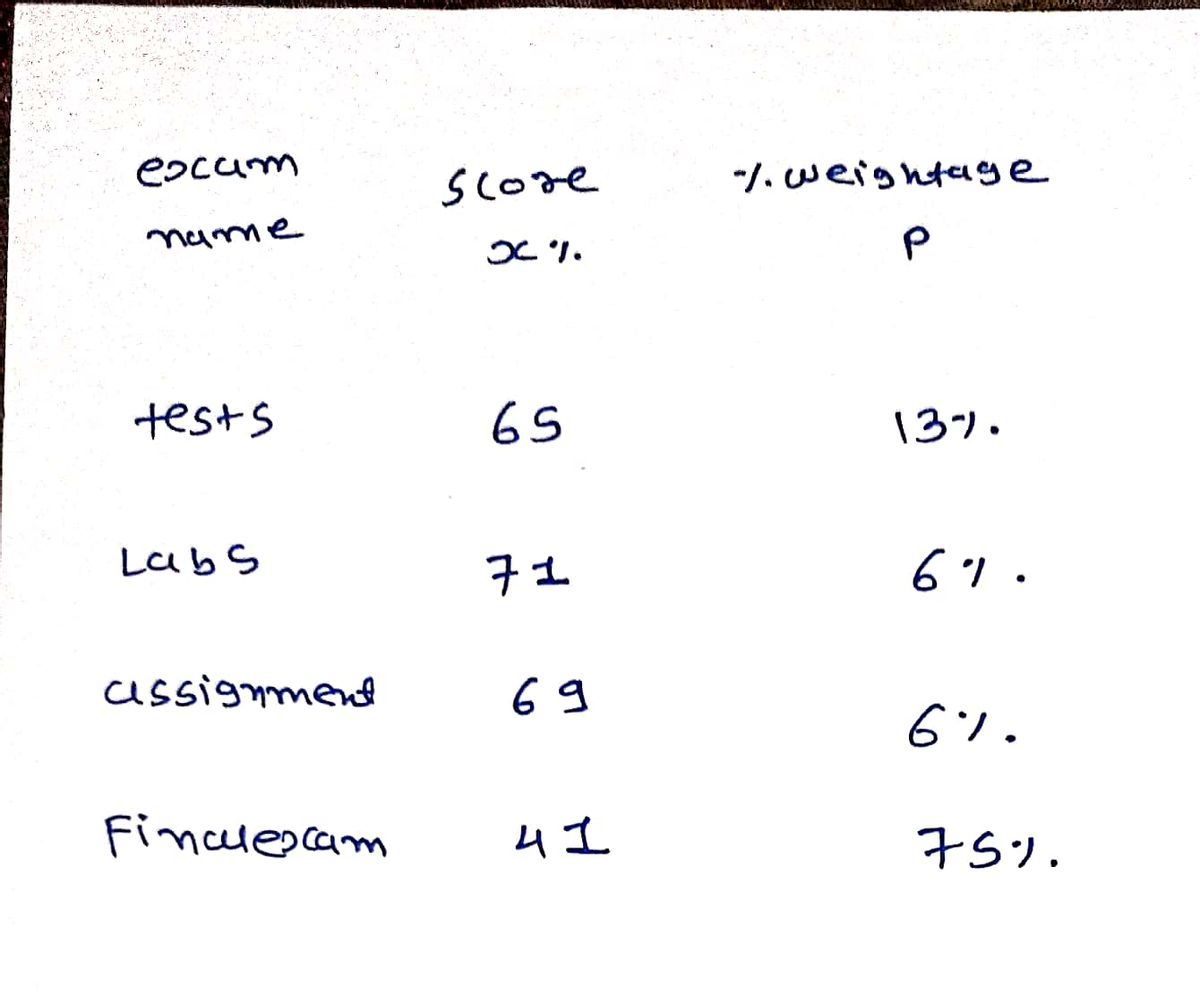In your Statistics class, your final grade is based on four categories. The categories are tests, labs, assignments, and a final exam. Suppose you earned the following grades in each of the categories; 65% on tests, 71% on labs, 69% on assignments, and 41% on the final exam. If tests are worth 13%, labs are worth 6%, assignments are worth 6%, and the final exam is worth 75%, determine your final grade in the course. Record the grade below as a percentage accurate to two decimal places. Final Grade: Check Answer here to seaTch Ft C F5 F2 F3 F4 ※一 F11 F6 F7 F8 F9 F10 %23 2$ & * 3 6 8. Y S G H J K L to IN
In your Statistics class, your final grade is based on four categories. The categories are tests, labs, assignments, and a final exam. Suppose you earned the following grades in each of the categories; 65% on tests, 71% on labs, 69% on assignments, and 41% on the final exam. If tests are worth 13%, labs are worth 6%, assignments are worth 6%, and the final exam is worth 75%, determine your final grade in the course. Record the grade below as a percentage accurate to two decimal places. Final Grade: Check Answer here to seaTch Ft C F5 F2 F3 F4 ※一 F11 F6 F7 F8 F9 F10 %23 2$ & * 3 6 8. Y S G H J K L to IN
A First Course in Probability (10th Edition)
10th Edition
ISBN:9780134753119
Author:Sheldon Ross
Publisher:Sheldon Ross
Chapter1: Combinatorial Analysis
Section: Chapter Questions
Problem 1.1P: a. How many different 7-place license plates are possible if the first 2 places are for letters and...
Related questions
Concept explainers
Contingency Table
A contingency table can be defined as the visual representation of the relationship between two or more categorical variables that can be evaluated and registered. It is a categorical version of the scatterplot, which is used to investigate the linear relationship between two variables. A contingency table is indeed a type of frequency distribution table that displays two variables at the same time.
Binomial Distribution
Binomial is an algebraic expression of the sum or the difference of two terms. Before knowing about binomial distribution, we must know about the binomial theorem.
Topic Video
Question
100%

Transcribed Image Text:In your Statistics class, your final grade is based on four categories. The categories are tests, labs,
assignments, and a final exam. Suppose you earned the following grades in each of the categories; 65% on
tests, 71% on labs, 69% on assignments, and 41% on the final exam. If tests are worth 13%, labs are worth
6%, assignments are worth 6%, and the final exam is worth 75%, determine your final grade in the course.
Record the grade below as a percentage accurate to two decimal places.
Final Grade:
Check Answer
pe here to search
※一
F11
F1
F3
F4
F5
F6
F7
F8
F9
F10
#3
%24
6
7
8
R
T
Y
U
S
G
J
K
C
VB
M
この
(7
134
DI
Expert Solution
Step 1

Trending now
This is a popular solution!
Step by step
Solved in 2 steps with 2 images

Knowledge Booster
Learn more about
Need a deep-dive on the concept behind this application? Look no further. Learn more about this topic, probability and related others by exploring similar questions and additional content below.Recommended textbooks for you

A First Course in Probability (10th Edition)
Probability
ISBN:
9780134753119
Author:
Sheldon Ross
Publisher:
PEARSON


A First Course in Probability (10th Edition)
Probability
ISBN:
9780134753119
Author:
Sheldon Ross
Publisher:
PEARSON
